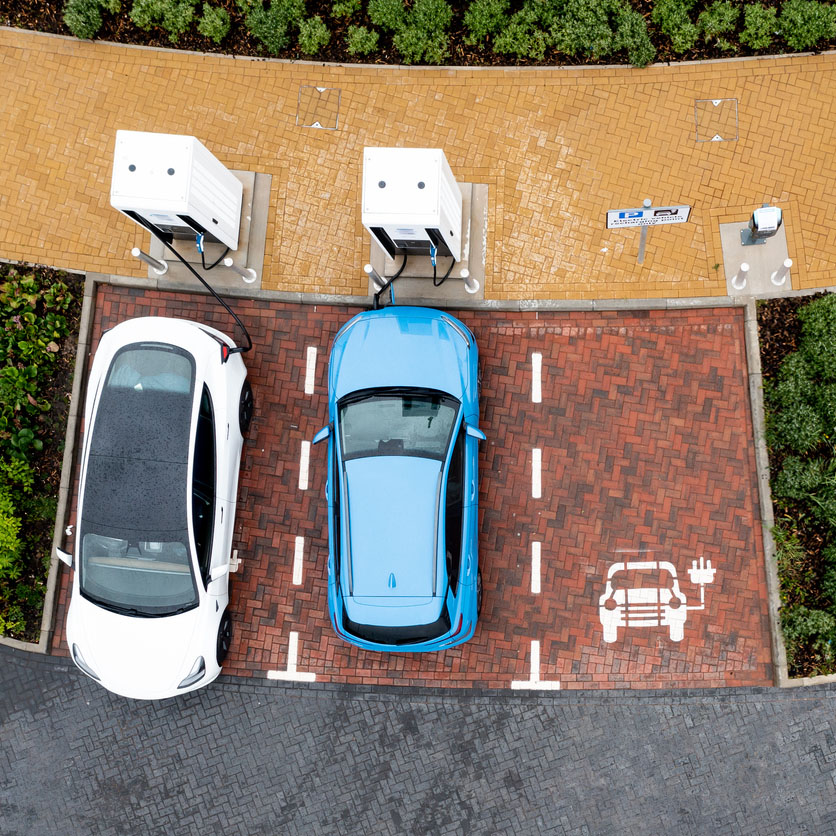It might seem strange to suggest, but almost 30 years after the birth of the commercial internet, the automotive sector is having its ‘Napster’ moment.
Just as the music industry changed completely back 1999 the advent of file-sharing, there has already been digital disruption of the auto industry. But now a range of factors are coming into play that will change the sector forever, shaking up old relationships and forging new ones.
And while it’s still far from certain what the balance of power will look like in a few years’ time, one thing is for sure; the new automotive ecosystem will be driven by data collaboration.
The drivers of change
There are four main changes behind the current upheaval.
i) The migration from the internal combustion engine to electric power: In December 2022, a third of the new cars registered in the UK were EVs (32.9%). That’s almost three times the market share they held the previous January (12.6%). It also means petrol stations are becoming less important as at-home and roadside charging points become more significant. So the role of the big petrol companies is diminishing as that of utility companies increases.
ii) The switch from dealerships to direct-to-consumer and agency models: If you buy a new car today, you’ll still typically go to a dealership. But rather than follow that model, disrupter brands like Tesla and Polestar have adopted more of a D2C approach. You can still go to one of their locations to test-drive the cars, but you complete your purchase online.
iii) The rise of mobility-as-a-service and the ability to deliver vehicle upgrades over-the-air: Vehicle software – and therefore all the features it controls – can now be upgraded over-the-air, just like your phone or your laptop. Indeed, as reported in TechCrunch, GM stated that their subscription service is expected to generate $25BN by 2030, akin to services like Spotify and Netflix. This adds another revenue stream for the manufacturers, who can charge for features on a subscription basis (heating the steering wheel in the winter, for example). It also gives them the opportunity to build the sort of relationship with their customers that wasn’t possible when they could only communicate with them when they changed cars every few years.
iv) The growth of value-added partnerships within the emerging ecosystem: Manufacturers are linking up with the new charging networks to offer discounted charging, for example. But they could equally well partner with someone like Starbucks – as Volvo did in the US – to offer drivers discounts on coffee or snacks while they wait for their car to charge.
It’s all about data
Behind all of this is data, and how that data can be used both to improve the experience for customers and to create competitive advantage for the various businesses.
As an example, LiveRamp has a partnership with car-buying marketplace site Carwow. People are using the Carwow site to configure their ideal car, book a test drive, and get a price. Other automotive clients are using said intent data to optimise their marketing communications to win customers from other brands, or to retain existing customers who might be looking at what their rivals have to offer.
These data partnerships, or indeed data collaborations, are in play throughout the customer journey, with different partners at different stages. At the ‘Consideration’ stage, customers are looking at the different brands and models, the fuel types, the financing, the insurance. If they’re looking to switch to an EV, they’re going to be looking at charging tariffs, home chargers and so on. So a manufacturer will be looking at marketplaces, dealers, comparison sites, insurance companies and utility firms as potential data partners.
As the customer moves into the ‘Purchase’ phase, the marketplaces, the dealer networks and the finance companies become increasingly relevant, alongside the manufacturer’s own data. Then, after purchase, the data sources change again to include the public charging networks and even restaurant chains.
Ways of working together
Just as there is a spectrum of potential data partners, there’s a number of different models for cooperation, all of which should be managed through a data clean room for secure and privacy-first collaboration.
There’s data collaboration, where partners share data to their mutual benefit. For example, a manufacturer and a finance company might share data about customer enquiries, with both sides getting sales leads from each other.
Data licensing means data owners provide data to a manufacturer for insight-generation or activation. Maybe the owner of an EV charging network sells data about high, medium and low usage groups, which the manufacturer can use to help them target the right prospect with the right vehicle.
Data-driven media will be familiar to anyone who’s been following the growth of Commerce Media recently, in particular Retail Media. Any business that communicates regularly with its customers can act as a media owner, providing another company which is interested in those customers with a targeted advertising opportunity. An example would be a utilities firm promoting a targeted offer from a manufacturer on its leasing pages, based on in-market intent signals.
Finally, brands can extend their data collaboration to co-branding; making joint offers to their combined customer base.
New game, new rules
Some of these approaches – in particular co-branding – will be familiar to the automotive sector. Others will require new thinking and new approaches from some or all of the participants. Data is the most powerful tool in any company’s box, but its use is tightly regulated, as well as being subject to rules made by technology giants such as Google and Apple. Any business wanting to begin any kind of data collaboration will need to be aware of these rules and regulations, so that’s what I’ll look at in my next post.
